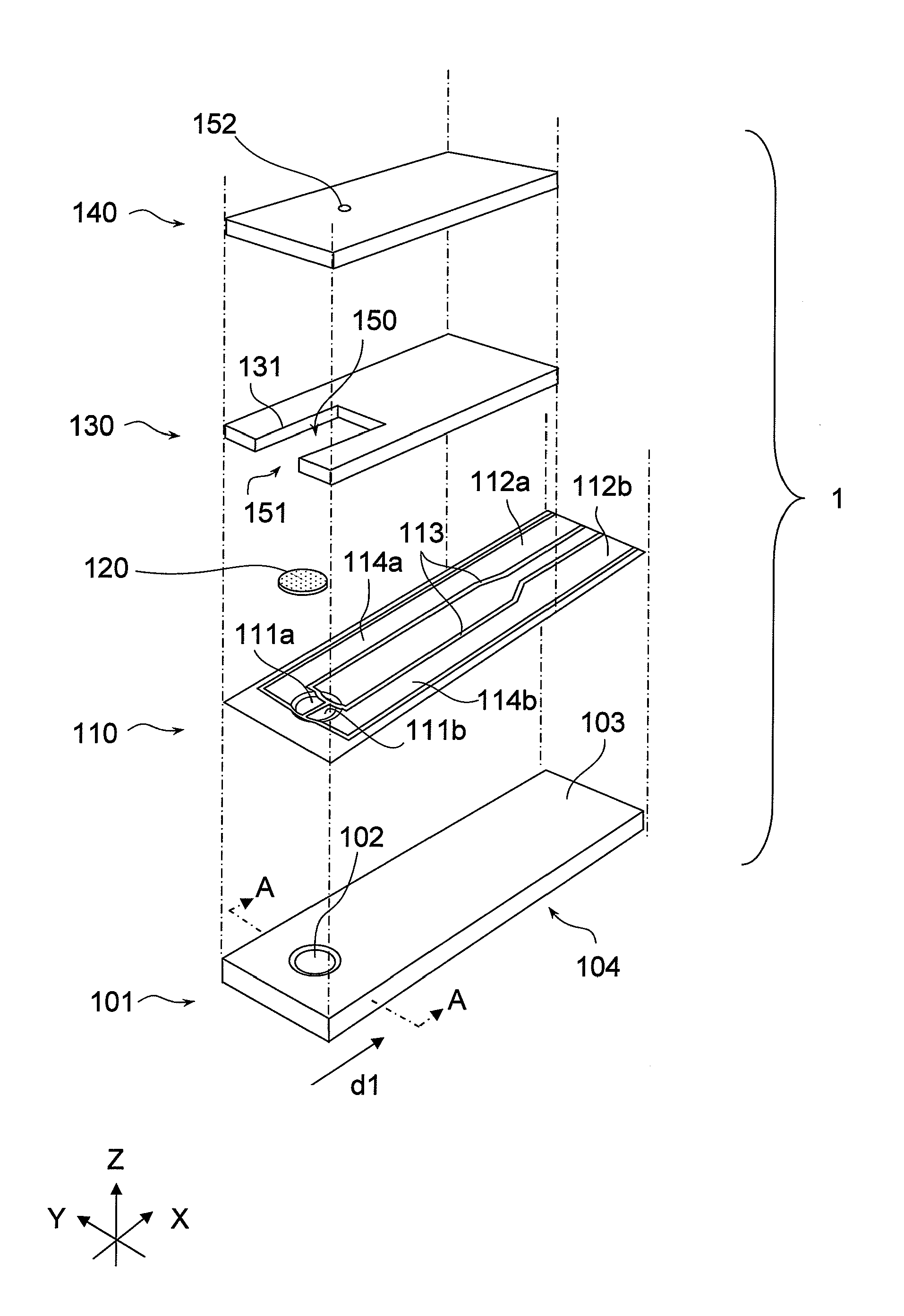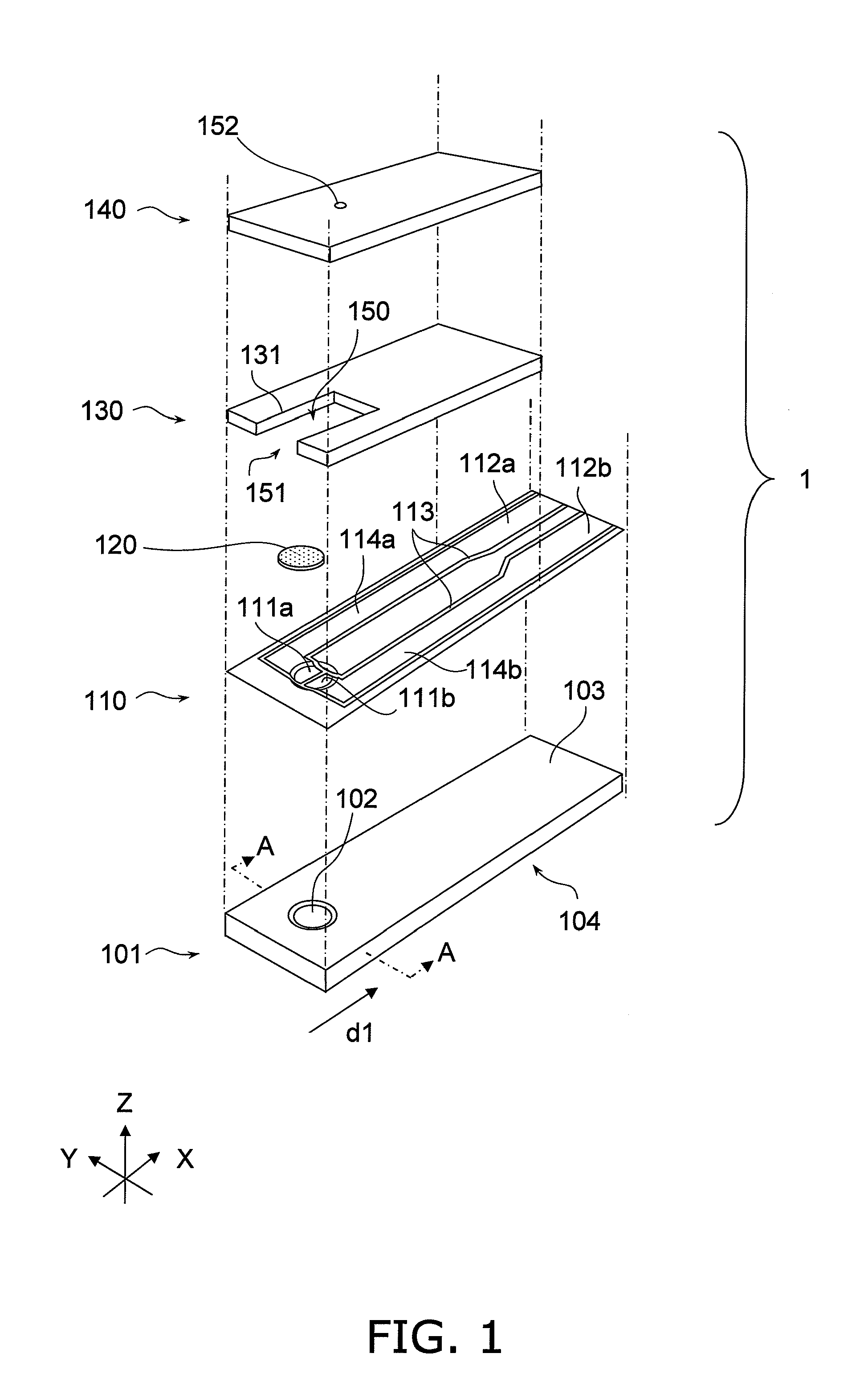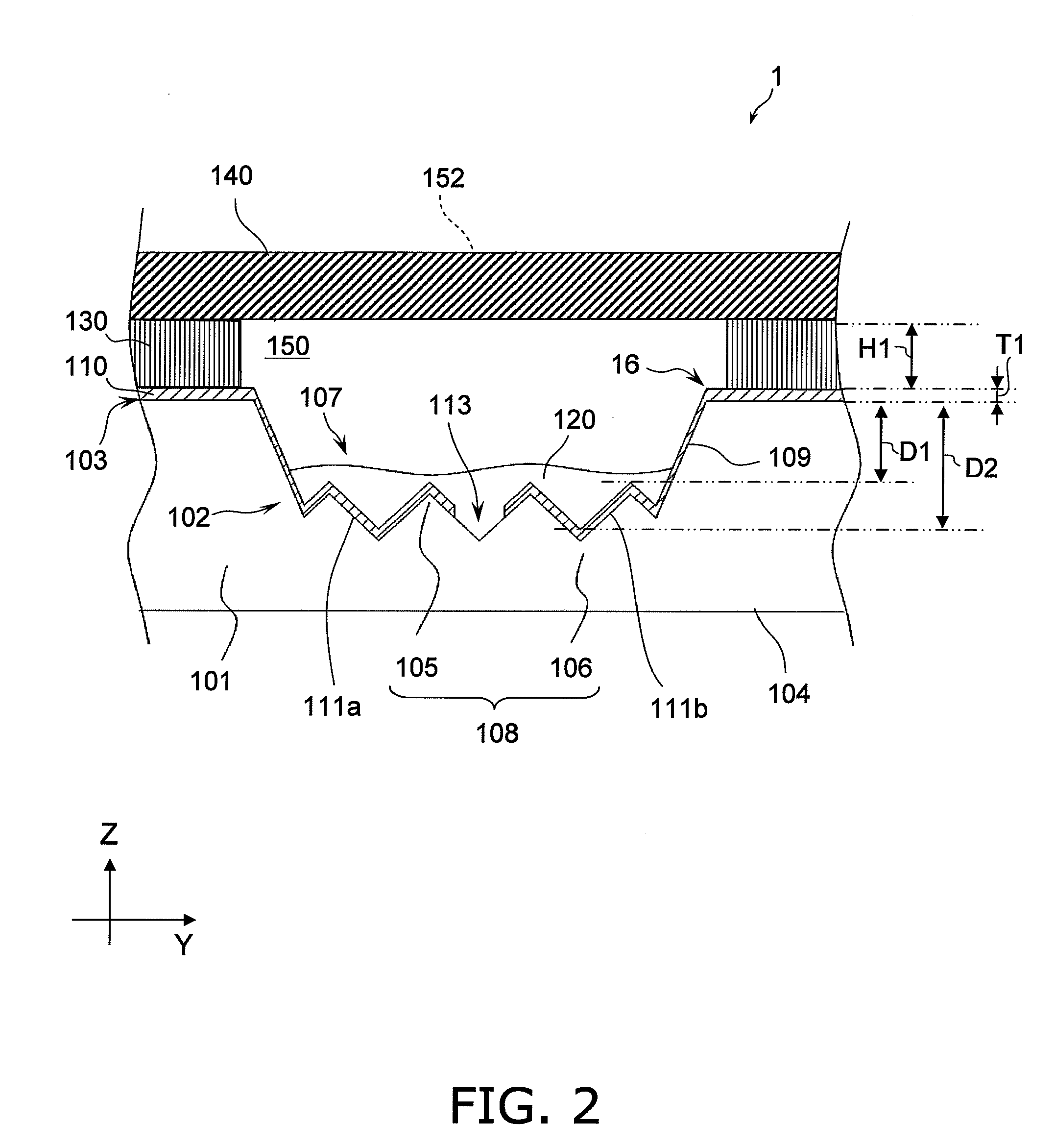As a result, though, of the biosensors sold for measuring blood glucose levels, some sacrifice performance for a lower price.
However, a drawback to a biosensor that makes use of a Clark
oxygen electrode is that the measurable range is limited by the amount of
oxygen dissolved in the liquid sample.
Part of the above-mentioned drawback to biosensors involving the use of a Clark
oxygen electrode, that the measurement range was limited, was solved by a method in which
hydrogen peroxide produced in a reaction by an oxidation
enzyme was amperometrically detected.
However, even with a method in which
hydrogen peroxide is measured, a drawback is that if the liquid sample is blood, depending on the applied
voltage (near +0.7 V to Ag / AgCl), various interference substances in the blood, such as
ascorbic acid or
uric acid, may affect the measurement result depending on their concentration.
Even today, however, the above-mentioned industries and products have yet to achieve major commercial success.
A reason for this is that, in addition to the technical problems listed up to now, first-generation biosensors are produced by glass working, which does not lend itself to
mass production, and when high manufacturing costs, as well as the production of gas permeable membranes and vessels for holding
electrolyte are taken into account, the sensor ends up being so large in size that it is inconvenient to use.
However, although inventions such as the one above were intended to overcome the drawbacks to first-generation biosensors, the biosensors to which these inventions were applied have yet to reach the market.
This is probably because the problems of manufacturing cost and ease of use have not been solved.
This simplified the user's operating procedure, but biosensors in which this technology is used have yet to become popular as compact devices that allow a blood glucose level to be easily measured at home.
This is probably because the problems of manufacturing cost and ease of use have not been solved.
This apparatus, however, is inconvenient to use, and so was not used in medical clinical applications.
Consequently, this apparatus did not enjoy commercial success (see Non-Patent Documents 11 and 14).
In other words, they involved merely forming a plurality of wires on a non-conductive base plate, and mounting a reaction
reagent, and the products were not convenient biosensors that could be used by ordinary consumers.
Examples of the specific reasons why the biosensors of by Case or Higgins et al. were inconvenient to use are that measurement required an extremely large amount of blood, and that the measurement accuracy of the sensors was problematic because of the sensor configuration and the manufacturing method.
However, no liquid
sample chamber is employed that would allow a reduction in the amount of blood needed for measurement.
Accordingly, pain is inflicted on a diabetes patient, which is a problem in terms of convenience.
The fact that the measurement result cannot be obtained until this reaction (the fact that the measurement can be obtained after this reaction)is complete can also be considered an inconvenience to the diabetes patient.
Nevertheless, such biosensor manufacturing methods generally increase the number of members entailed, and each member needs to be machined very precisely.
As a result, the manufacturing process becomes more complicated, and this leads to the problems of lower
manufacturing efficiency and higher costs.
This biosensor is a type with which a liquid sample is dropped perpendicularly to the
depth direction of the well, making it difficult for the user to use.
Also, since the electrodes and the reaction reagent layer have a complicated structure, the cost is higher, so a
disadvantage is that this approach is not suited to
mass production.
Therefore, this method also makes the manufacturing process more complicated, the
manufacturing efficiency is poor, and the costs are higher.
Consequently, this method entails more equipment the number of steps increases, and greater
machining precision is necessary, so it seems unsuited to the large-scale manufacture of inexpensive biosensors.
However, in the manufacture of this biosensor, selecting the cover material and manufacturing accuracy are extremely important, and difficulties are foreseen in these areas.
However, even at the time this invention was disclosed, 9 μL was twice the amount of blood as that in the above-mentioned invention of Nankai et al., and this invention was unsuited to reducing the amount of sample needed for measurement.
This
disadvantage is that while colorimetric detection and reaction is useful at low concentrations of the measurement target substance, measurement is difficult at higher concentrations.
Nevertheless, to realize this
system, the configuration of the biosensor and measurement apparatus would probably be extremely complicated.
And this
system can not provide merits (such as measurement accuracy) that offsets this complexity.
Also, with an
electron transfer system that follows an
enzyme reaction, since the reaction reagent composition and the
reaction system are complicated, it can be easily imagined that the response speed and reproducibility of the resulting response values will suffer, as will the storage stability of the biosensor.
All current biosensors, however, still have various drawbacks.
One of these drawbacks is interference with the biosensor reading brought about by other substances which are present in a liquid sample and can oxidize at the same potential as the measurement target.
Another drawback to biosensors in which the liquid sample is blood is interference caused by red blood cells (
hematocrit effect).
Whereas red blood cells were usually separated or removed by centrifuging, with this method, red blood cells could be separated without pretreatment, but the deposition of glass fibers is expected to drive up material costs and manufacturing costs, and to adversely affect manufacturing precision.
In addition, since blood is passed through fibers whose
diameter is sufficient to separate red blood cells, the rate at which the sample is drawn in is low, and this probably makes the product less convenient to use.
However, adding these substances to the reaction reagent causes problems in that it makes the reagent preparation process more complicated, makes the reagent layer formation process more complicated by increasing the reaction reagent
viscosity, adversely affects the
drying process, leads to a decrease in the reaction reagent reaction efficiency, decreases the long-term storage stability of the reaction reagent, and so forth.
In addition to the above drawbacks, other drawbacks to prior art are that its
linear range is limited, and that a relatively large quantity of sample is needed.
Furthermore, these apparatus take a comparatively long time until the steady response prior to obtaining a reading becomes obvious.
Each of these drawbacks individually, or combined with one or more other drawbacks, can be a source of an erroneous measurement reading in analysis.
Even if the minimum amount of liquid sample needed is reduced, though, the
puncturing that causes the user pain is still not eliminated.
Also, if the required amount is reduced so much that the space inside the liquid
sample chamber is filled with the reagent layer, this will likely have a detrimental effect on how the liquid sample is drawn in.
Also, if the liquid
sample chamber is merely made smaller to reduce the required amount, then the electrode surface area and the reagent layer will also become smaller at the same time, so the response value obtained during measurement will be smaller, and as a result, the
signal to
noise ratio (S / N ratio) will deteriorate and measurement accuracy will suffer.
A problem with a reaction reagent with excellent resolubility, however, is that the reagent ends up being carried away in the intake direction when the liquid sample is drawn in.
This problem has become much more critical as biosensor development has advanced in recent years.
However, when the leaching or
diffusion of a reaction reagent is suppressed by adding a
polymer to the reaction reagent, or by fixing with covalent bonds, or by supporting the reaction reagent in a
sol-
gel matrix, it becomes impossible to conduct a fast reaction within a limited amount of time.
However, even though the direction in which the liquid sample flows can be controlled, the
intake rate cannot be controlled, and it is difficult to prevent the reaction reagent from being carried away.
Also, in these reports, the base plate is worked by
laser ablation, but this requires sophisticated
machining technology and considerable equipment to form a
microstructure such as that proposed.
Putting this technique into
actual practice is probably going to be met with many difficulties.
The basic structure of a biosensor in which a reaction reagent is disposed on this embedded electrode is not that different from the structure of a conventional embedded electrode, so this does not seem to solve the problem of controlling the extent to which the reaction reagent is carried away by liquid sample intake.
Also, with biosensors that are expected to see use under a variety of conditions, the flexibility of the base plate in these biosensors is predicted to be affected by the usage environment, which will likely
pose problems in practical application.
This portion is the portion that comes into direct contact with user when the user mounts the biosensor in the
measurement device, so the product is obviously less comfortable to use if the shape is peaked.
Also, if the peaked portion should be deformed during transport or when touched by the user, the groove shape and volume may be changed, and this could have a serious adverse affect on measurement accuracy.
For the above reasons, it is believed that there are still problems with this technique if the convenience and measurement accuracy demanded of a biosensor are both to be satisfied.
Also, since the basic structure of the liquid sample chamber is not that different from a conventional design, this does not seem to solve the problem of controlling the extent to which the reaction reagent is carried away by liquid sample intake.
 Login to View More
Login to View More 


